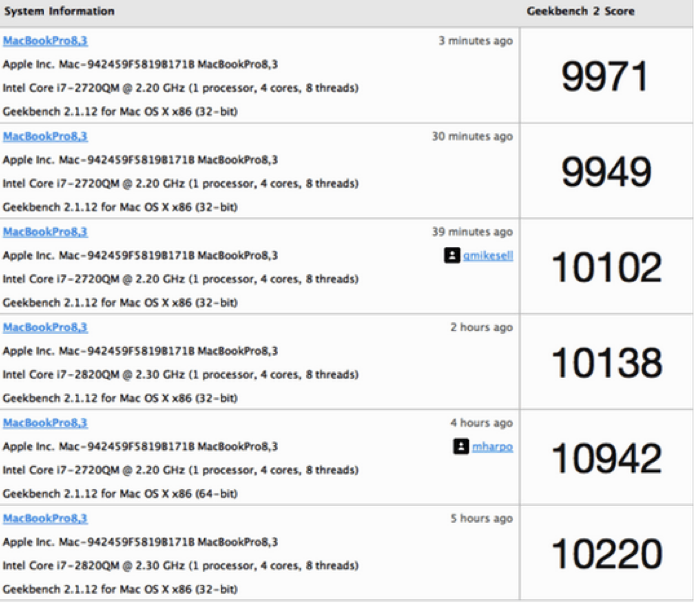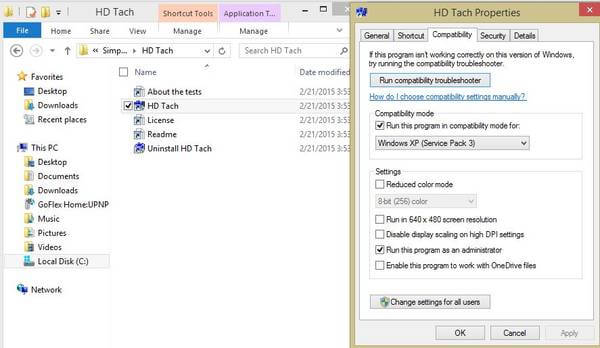Test Hard Drive For Mac
WD My Passport For Mac (Best Overall) The Western Digital 2TB My Passport For Mac is the perfect. Take important files with you when you travel with this G-DRIVE Mobile USB-C hard drive. It has 1TB of space to store a library of music, photos and documents, and it's compatible with both MAC and PCs. This G-DRIVE Mobile USB-C hard drive has a transfer rate of up to 136MB/sec. For quick file sharing.
Video showing how to check hard drive health on Mac, detailed information - https://blog.pcrisk.com/mac/13229-how-to-check-hard-drive-health-on-mac.
Therefore, any crashes on the hard disk (HDD) or flash drive (SSD) might lead to a Mac failure or, even worse, data loss. Periodically checking the health status of the hard drive is a good precaution against any data loss or unexpected software crashes. LaCie Mobile Drive. Backups Made Easy. What is one of the most common uses for an external.
How to check your Mac's hard drive health status?
Usb Drive Speed Test Mac

Internal storage is one of the most important components of any computer. This where the operating system and all software resides. Therefore, any crashes on the hard disk (HDD) or flash drive (SSD) might lead to a Mac failure or, even worse, data loss. Periodically checking the health status of the hard drive is a good precaution against any data loss or unexpected software crashes. Note that hard disks and especially flash drives often have a limited number of write cycles. Whether internal or external storage, drives are susceptible to failures over time.
Before data loss or problems accessing the Mac, you should be able to detect the warning signs of drive failures: random freezes, freezes when attempting to move files, errors stating that permissions are denied when attempting to access files or data (which previously were accessed regularly without problems). There might also be a number of other random or erratic issues relating to hard drive failure. Fortunately, Apple has included a built-in tool that is able to check and repair minor damage to storage. This method works on both internal and external storage (hard disk drive or flash drive). Furthermore, you can repair the startup disk by using the file system check function. In this article, we describe the methods available to check drive health status and attempt to repair bad sectors and other issues.
Table of Contents:
It is recommended to run a free scan with Malwarebytes - a tool to detect malware and fix computer errors. You will need to purchase the full version to remove infections and eliminate computer errors. Free trial available.
Check hard drive health via Disk Utility
As mentioned above, do not wait until you encounter erratic issues before checking the current status of the hard drive. To prevent any data loss or performance problems, periodically inspect the drive. This is quite simple using a built-in tool relating to the hard drive called Disk Utility. Use Spotlight by pressing the keyboard shortcut of Command and Spacebar, and then type Disk Utility. Alternatively, go to the Utilities folder under Application via Finder. Once you have launched the application, select one of connected drives from the list in the left hand sidebar. Click the First Aid button in the top middle of the window. You will be prompted to confirm your action. Click Run.
If you are trying to check the status of a startup disk, another warning will pop up, stating that you are trying to verify a booted drive. To perform a complete check, the operating system will be frozen. If you are not performing any important, active tasks, click Run. All software will regain its full functionality immediately the verification process finishes.
When the First Aid function completes, the resultant message will state that the hard drive is OK. Otherwise, click Repair disk (if suggested) or try repeating the First Aid procedure until the result indicates that the hard drive is OK. Disk Utility is sometimes unable to repair a booted drive - in this case, follow the next method.
Repair startup disk via macOS Recovery mode
If you have encountered a situation whereby Disk Utility is unable to repair the hard drive when it is booted, there is another way to access the tool without loading the Mac. You are advised to first create a backup of the storage - the easiest way to do this is by using Time Machine. When you have prepared a backup, shut down the Mac and then press and hold Option (Alt), Command, and R while starting the computer. Keep holding the keys until the Apple logo or spinning Globe appears. From the macOS Utilities window, select Disk Utility.
Repeat the procedure to check the hard drive - select one of the connected drives from the list in the left hand sidebar. Next, click the First Aid button in the top middle of the window. You will be prompted to confirm your action. Click Run. Finally, click Repair disk if prompted and attempt to automatically repair the hard drive. Checking hard drive health status is good prevention against unexpected issues and data loss, however, also maintain regular backups, since hard drive failures can sometimes occur without any warning signs.
Use Single User Mode to repair hard drive

Test Hard Disk Mac Os X
The most efficient method might be to boot the Mac into Single User Mode and use the fsck command - a shortcut to launch the file system check feature. First, create a backup and then shut down your computer. To access this mode, press and hold Command and S immediately after hearing the startup chime. In Single User Mode, you should see a lot of white text on a black display. Be patient, since this boot might take some time. Once booting is finished, each new line will be prepended with 'localhost//'. Type the following command and press Return to execute:
- fsck -fy

When the checking process is finished, look for a message stating 'The volume appears to be OK' in the results. Otherwise, repeat the system check until you receive this message. Finally, type reboot and press Return to exit Single User Mode. When the computer is completely booted, launch disk check via Disk Utility again to ensure everything is working properly. If none of these steps resolved the hard drive issues, contact Apple Store or a licensed technician.

Video Showing how to check Mac hard drive health status
To use any of these key combinations, press and hold the keys immediately after pressing the power button to turn on your Mac, or after your Mac begins to restart. Keep holding until the described behavior occurs.
- Command (⌘)-R: Start up from the built-in macOS Recovery system. Or use Option-Command-R or Shift-Option-Command-R to start up from macOS Recovery over the Internet. macOS Recovery installs different versions of macOS, depending on the key combination you use while starting up. If your Mac is using a firmware password, you're prompted to enter the password.
- Option (⌥) or Alt: Start up to Startup Manager, which allows you to choose other available startup disks or volumes. If your Mac is using a firmware password, you're prompted to enter the password.
- Option-Command-P-R:Reset NVRAM or PRAM. If your Mac is using a firmware password, it ignores this key combination or starts up from macOS Recovery.
- Shift (⇧): Start up in safe mode. Disabled when using a firmware password.
- D: Start up to the Apple Diagnostics utility. Or use Option-Dto start up to this utility over the Internet. Disabled when using a firmware password.
- N: Start up from a NetBoot server, if your Mac supports network startup volumes. To use the default boot image on the server, hold down Option-N instead. Disabled when using a firmware password.
- Command-S: Start up in single-user mode. Disabled in macOS Mojave or later, or when using a firmware password.
- T: Start up in target disk mode. Disabled when using a firmware password.
- Command-V: Start up in verbose mode. Disabled when using a firmware password.
- Eject (⏏) or F12 or mouse button or trackpad button: Eject removable media, such as an optical disc. Disabled when using a firmware password.
If a key combination doesn't work
If a key combination doesn't work at startup, one of these these solutions might help:
- Be sure to press and hold all keys in the combination together, not one at a time.
- Shut down your Mac. Then press the power button to turn on your Mac. Then press and hold the keys as your Mac starts up.
- Wait a few seconds before pressing the keys, to give your Mac more time to recognize the keyboard as it starts up. Some keyboards have a light that flashes briefly at startup, indicating that the keyboard is recognized and ready for use.
- If you're using a wireless keyboard, plug it into your Mac, if possible. Or use your built-in keyboard or a wired keyboard. If you're using a keyboard made for a PC, such as a keyboard with a Windows logo, try a keyboard made for Mac.
- If you're using Boot Camp to start up from Microsoft Windows, set Startup Disk preferences to start up from macOS instead. Then shut down or restart and try again.
Remember that some key combinations are disabled when your Mac is using a firmware password.
Test Hard Drive Mac Os

Learn more
- Learn what to do if your Mac doesn't turn on.
- Learn about Mac keyboard shortcuts that you can use after your Mac has started up.
